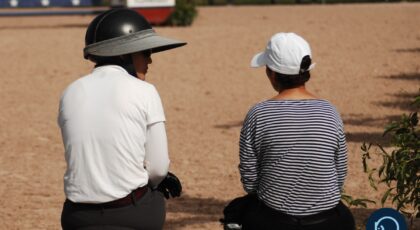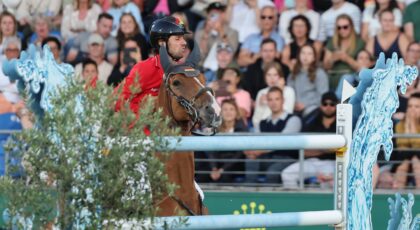“Roma victa!” If you’re a fan of the Academy Award-winning movie Gladiator, you’ll no doubt recognize Maximus Decimus Meridius’s famous battle cry (‘Rome victorious!’) in the opening scene as he leads his cavalry unit in a charge down a wooded hill somewhere in Germania.
On screen and off, when it comes to cavalry battle sequences, it’s the soldiers, not their horses, that tend to steal the scene. But this spring, the Roman mounts of ancient Germania are taking center stage thanks to a recent excavation in Bad Cannstatt, a borough of Stuttgart, in southwest Germany.
There, the Stuttgart Housing and Urban Development Company has completed an archeological excavation project of more than 100 horse skeletons. The dig, which began last July, is the culmination of a near-century’s worth of study which was initiated after skeletons were discovered in the area during the construction of residential blocks in the 1920s.
Located some 400 meters from the ancient Roman cavalry fort and 200 meters from the civilian settlement at Bad Cannstatt, the skeletons were found in a horse cemetery, or schindanger, and were radiocarbon dated to the 2nd century AD.
“Based on the archaeological and historical knowledge of the Roman Bad Cannstatt, the horses can be assigned to the cavalry unit—a so-called ‘ala‘—that was stationed at Hallschlag from approximately 100 to 150 AD,” says Sarah Roth, the archaeologist in charge at the State Office for Monument Preservation (LAD) in the Stuttgart Regional Council.
“The troop, with almost 500 riders, is likely to have had a total horse population of at least 700 animals, and losses had to be constantly replaced.”

Most of the horses found were buried on their sides in shallow pits, with their legs stretched out or bent, having been dragged there or, in some cases, led. “The horses do not all appear to have died at the same time in a major event such as a battle or epidemic.
“Rather, the animals buried here either died of illness, injury, or other reasons during the ala’s presence in Bad Cannstatt, or were no longer able to fulfill their role as military horses,” Roth explains. “If the horse could still walk on its own, it would have been brought to the horse cemetery and killed on site to avoid having to transport [its body].”
In addition to equines, the bones of an adult human man were found lying prone among the horse skeletons. His likely status as an “outsider” of ancient society is suggested by both his lack of grave goods and his location; there was a human burial ground for the Roman settlement of Bad Cannstatt nearby.
And though we will likely never know what brought that poor man to his unceremonious end, scientists hope that archeozoological studies of the equine skeletons in the mound will continue to answer important questions about the horses of the ala.
In addition to learning more about their age, sex, and physical stature, scientists hope to discover how the horses were fed and kept, and where they originated from. For local residents, the answers may hold the keys to their own historical identity: ‘Stuttgart’ derives from the German word Stutengarten, which translates to ‘mare garden,’ or stud farm.
And that’s not the only reason the horses of the Bad Cannstatt schindanger are resonating with modern audiences.
While the majority of the ala’s horses seem to have been buried—even disposed of—without much ceremony, there was one significant exception. That particular horse skeleton (see featured image) was found with a small oil lamp and two jugs in the crook between its legs—typical Roman grave goods reserved for the human dead to assist them in the afterlife.
“Here, we see a particularly close bond between the owner and his horse,” Roth says. “Even after some 1,800 years, the grief over the death of this one animal is still evident.”


 May 5, 2025
May 5, 2025 

























